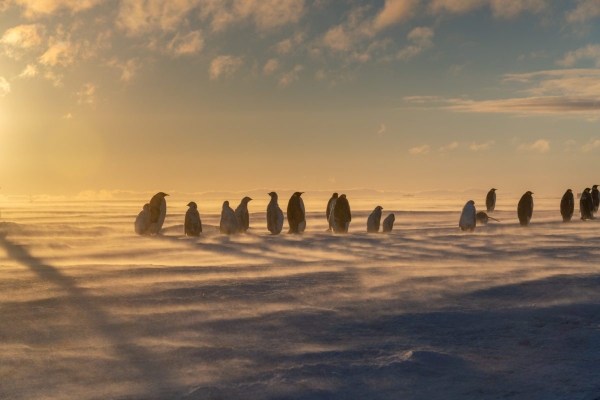Woods Hole Oceanographic Institution among research groups that offer key findings to support federal protection of species, increasingly under siege by climate change
Woods Hole, MA — Today, the U.S. Fish and Wildlife Service (USFWS) announced that emperor penguins have been listed as a threatened species under the Endangered Species Act (ESA) based on evidence that the animal's sea ice habitat is shrinking and is likely to continue to do so over the next several decades. This listing comes more than one year after a USFWS proposal to list the species, and confirms that the animal is at risk of becoming an endangered species—in danger of extinction—in the foreseeable future if its habitat continues to be destroyed or adversely changed.
The Endangered Species Act is the world’s strongest environmental law focused on preventing extinction and facilitating recovery of imperiled species. The ESA has increasingly been applied to provide protection for species threatened primarily, or in part, by climate change, with the polar bear being the first species listed principally due to global warming (2008). For threatened species, listing under the ESA mandates use of science-based, enforceable tools to reduce climate threats and increase resilience. Changing weather and climate are affecting the extent and duration of sea ice around Antarctica with consequences for the food web, key thresholds for naming the emperor penguins to the ESL.
Read More: Woods Hole Oceanographic Institution
A colony of emperor penguins, adults, and chicks on the ice in Antarctica. The species has been listed as threatened under the Endangered Species Act, which confirms that the animal is at risk of becoming an endangered species – in danger of extinction – in the foreseeable future if its habitat continues to be destroyed or adversely changed. (Photo Credit: Daniel Zitterbart © Woods Hole Oceanographic Institution)


